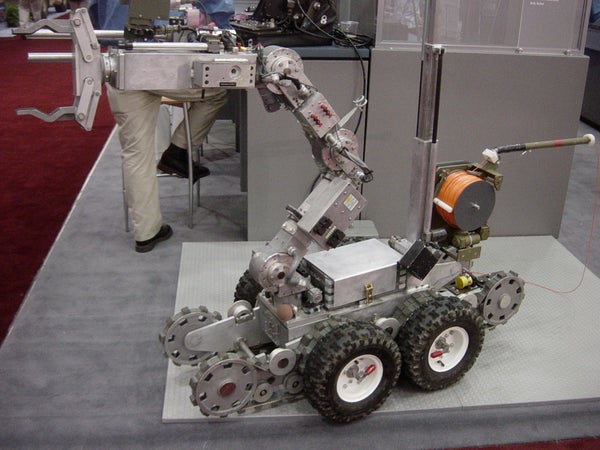A robot carrying an explosive device was used to kill one of the shooters in Thursday night’s horrific violence in Dallas, Texas, in what many law enforcement and other experts are calling the first such use of robotics technology by U.S. police. Five police officers were killed and seven others were wounded, along with two civilians, during a demonstration protesting the recent deaths of two African-American men at the hands of police in other cities. Micah Johnson, the man suspected of shooting the officers, was killed by remotely detonated explosives on the robot after a standoff and failed negotiations with police.
Toby Walsh, a professor of artificial intelligence at the University of New South Wales, cautions against seeing this use of a robot as a nightmarish science-fiction scenario—because the robot was being operated by a human via remote control. “In [that] sense, it was no more taking us down the road to killer robots than the remote-controlled Predator drones flying above the skies of Iraq, Pakistan and elsewhere,” Walsh told Scientific American in an email. “A human was still very much in the loop and this is a good thing.”
Others agree. “The fact of the matter is, [the robot] is a tool. As a tool, these capabilities have existed for years and years,” says Red Whittaker, a robotics professor at Carnegie Mellon University. “It’s remote controlled—it’s not different whatsoever from pulling a trigger or throwing a grenade or whatever the other options might be. Remote control is the kind of thing that you can buy in a hobby shop.”
On supporting science journalism
If you're enjoying this article, consider supporting our award-winning journalism by subscribing. By purchasing a subscription you are helping to ensure the future of impactful stories about the discoveries and ideas shaping our world today.
“Law enforcement has been using robots of this ilk for explosive ordinance disposal. The bomb squad—they’ve had them for decades now,” says David Klinger, a criminologist at the University of Missouri-St. Louis. Klinger says the robots are versatile tools not only for bomb disposal, but also a variety of situations in which an officer’s life is at stake. Machines like the one in Dallas, which based on initial reports was likely a Northrop Grumman Andros F6A or F6B, look like tanks and come with interchangeable arms, allowing them to have different capabilities including mounted shotguns, he says.
Klinger says this is the first case of U.S. police using a robot-mounted explosive that he is aware of—and he sees no problem with it. “The law doesn’t discriminate among sorts of delivery systems for deadly force,” he says. “If a police officer could have shot this individual, it makes sense they could have used any other mechanism of deadly force. We have had situations in the United States where police officers have run people over. If you can shoot someone, if you can run them over—there have been a few situations that I’m aware of where police officers have introduced incendiary devices…then why would we not be able to legally use an explosive device?”
Ron McCarthy, a retired police officer who served as the assistant unit commander of the LAPD’s S.W.A.T. team for 13 years, agreed. “They’re very handy, they’re very useful and there’s a lot of them out there. And the use of one in this case? Perfect. When we have someone who is a threat to kill citizens or police officers, we don’t gamble on police officer’s lives.”
Walsh did sound a note of caution about the speed at which technologies like this are being developed, and he worries that someday such robots may be automated—which he sees as far more ethically fraught. “It is only a small step to take the human out of the loop and replace them with a computer,” he wrote in his email. “In the last few months, we've seen the U.S. Navy trial its first autonomous ship. We've had the first death caused by an autonomous car. These are technologies that are very near.”
